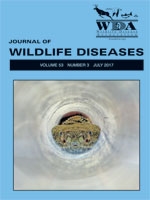Rabies is a zoonosis that causes thousands of animal and human deaths worldwide. Serological studies provide information concerning rabies virus circulation among animals and humans. We evaluated the circulation of the rabies virus in wildlife in nine municipalities of São Paulo State, Brazil. We took blood samples from 27 terrestrial animals of nine different mammalian species in locations without cases of rabies in human and wild terrestrial mammals. Sera were tested with the use of the rapid fluorescent focus inhibition test (RFFIT) for the detection of rabies virus–neutralizing antibodies (RVNA). The RFFIT was positive in 100% of the samples, with many (81.48%) showing protective titer levels (>0.5 IU/mL) with other samples (18.52%) showing titers representing exposure (<0.5 IU/mL). We report RVNA in novel species (e.g., Alouatta caraya and Tapyrus terrestris). Wild animals were exposed to rabies virus in municipalities without a history of human rabies cases, which demonstrated a need for research to understand the role of these animals in the circulation and transmission of the disease.
How to translate text using browser tools
1 July 2017
Rabies Virus Exposure of Brazilian Free-ranging Wildlife from Municipalities without Clinical Cases in Humans or in Terrestrial Wildlife
João Marcelo Azevedo de Paula Antunes,,
Larissa de Castro Demoner,
Tatiana Morosini de Andrade Cruvinel,
Ana Paula Kataoka,
Luzia Fátima Alves Martorelli,
Gustavo Puglia Machado,
Jane Megid
ACCESS THE FULL ARTICLE

Journal of Wildlife Diseases
Vol. 53 • No. 3
July 2017
Vol. 53 • No. 3
July 2017
Brazil
public health
viral circulation
wildlife
zoonosis




